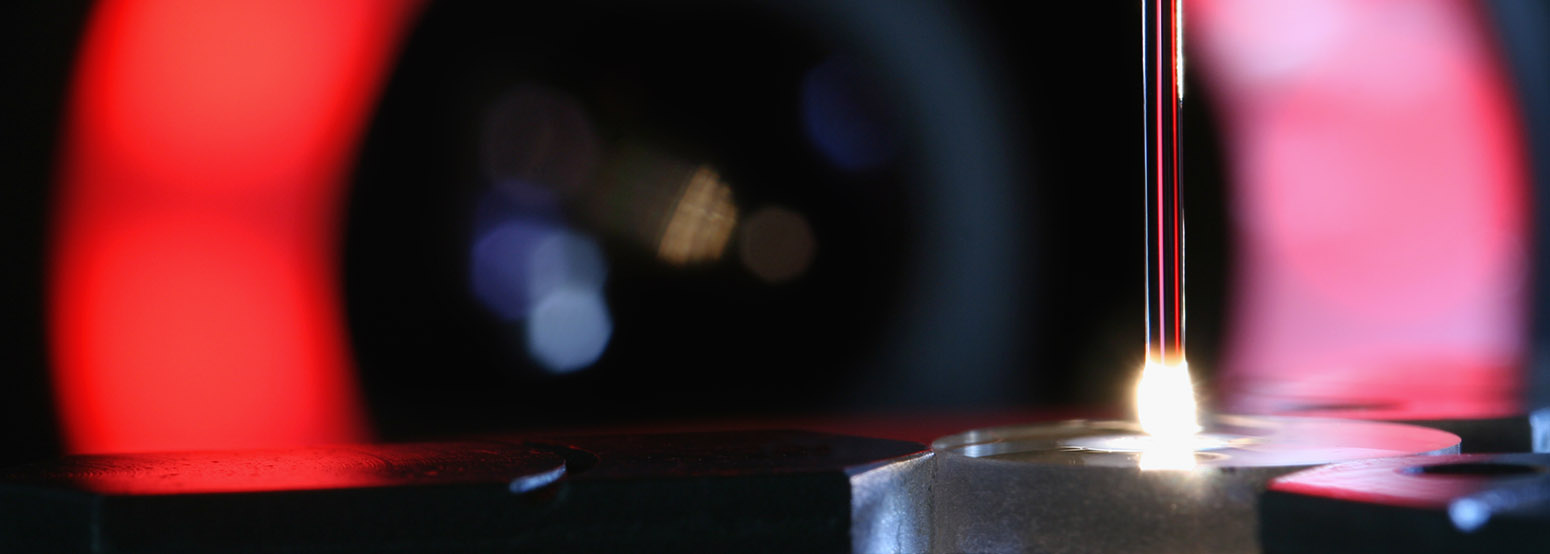Motivation
Splicing as a joining procedure is used to build up fiber lasers and for transporting high optical powers in the kW range via optical fibers.
If joining parts with different cross-sections and specific waveguide structures (e.g. photonic crystal fibers) as well as different dopings are to be connected with low losses but maintain mechanical stability, CO2 laser splicing can be used to achieve this with outstanding quality.
Procedure
In contrast to commercially-available splicing equipment, the Fraunhofer IOF uses a system with a CO2 laser as its heating source. The reason for this is the fact that glass can excellently absorb this laser wavelength.
Using special beam shaping, a precise laser effect zone is generated which, using a computer-controlled process, supplies outstanding splicing quality and reproducibility.
The large working distance offers the option to produce various high-performance components from doped or pure silica glass. Contamination from process gases or deposits of electrodes or filaments is not possible.
With the stability and flexibility of the splicing processes, rapid change between different parts to be joined is possible if the parameters have been uniquely set in advance.
Application
CO2 laser splicing is an outstanding method for producing high-performance components such as the joining of all types of optical fibers (SM, MM, PCF, …) at end caps from silica glass with various diameters. The end cap reduces not just the laser power density at the glass-air boundary but also serves as a fiber holder and can be additionally functionalized (antireflective coating, wedge angle, spherical/aspherical surface).
